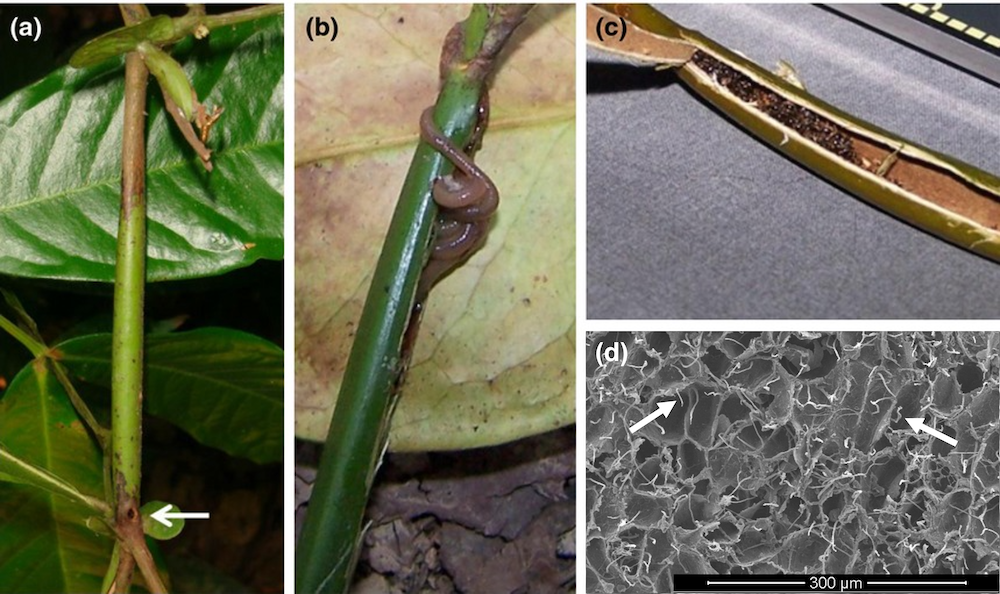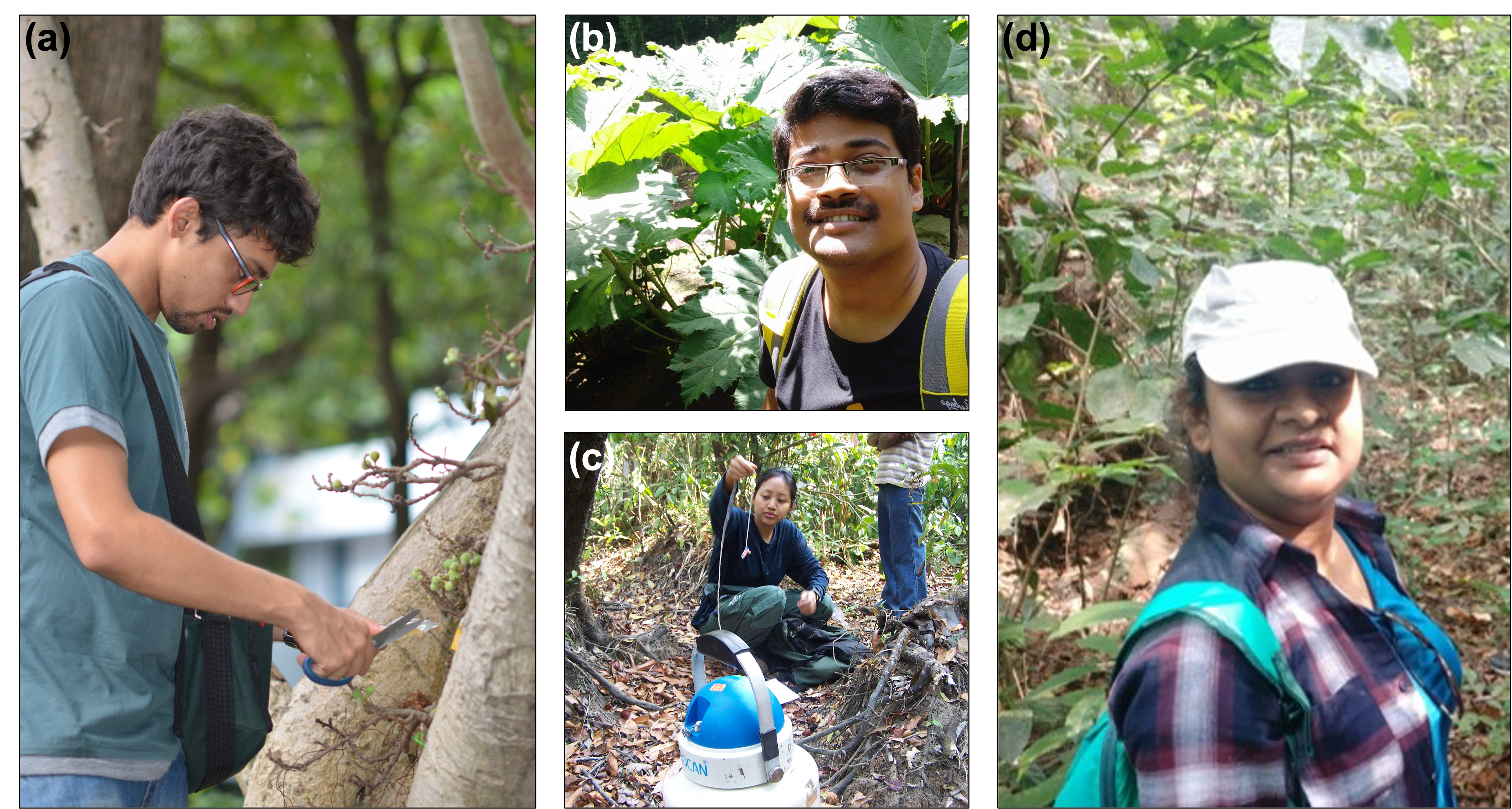Intrigued by the rich flora and fauna in the campus of the Indian Institute of Science, Bengaluru and the nearby forests of the Western Ghats of India, researchers from the institute examine the complexities of mutualistic relationships in nature.

Long-term close interactions between living organisms abound in nature. Observing these associations – such as the mutualistic interactions between insects and plants among numerous others – imbues the minds of the researchers with curiosity. For instance, a bee feeds on nectar – a sugary fluid – present in the flowers of a plant, and in return, aids in the plant’s pollination. Such exchanges occurring in nature are known as ‘mutualisms’.
A mutualism is essentially a type of interaction between two parties in close proximity, where there is an exchange of rewards and services between them. The partnership is mutually beneficial to both the parties, with minimal costs incurred on both sides. This stable relationship is based on a fine equilibrium in which one partner provides just enough rewards to get the required service, and nothing more.
Ecologists now believe that almost every species on earth is directly or indirectly involved in one or more such interactions. Fascination for such systems has inspired several researchers from the Indian Institute of Science (IISc), Bengaluru to explore the rich flora and fauna at its lush green campus and the nearby Western Ghats – one of the global biodiversity hotspots – and study these systems closely. The inquiries of some of these researchers into two such mutualistic systems have revealed the ways in which the partners have co-evolved to perform the balancing act in their complex relationships.
The fig tree and the wasp
A fig fruit (Fig. 1a) contains clusters of tiny flowers that form a unique enclosed flower arrangement, called a ‘syconium’. Hidden inside it, specialised fig wasps (Fig. 1b) help in pollen exchange between male and female flowers. In return, the fruit bestows them with nourishment and a safe haven for the wasps’ eggs. Each wasp community is completely dependent on its specific host fig tree species to complete its life cycle.

Vignesh Venkateswaran, a former Integrated-PhD student at IISc, currently a Postdoctoral researcher at the Max Planck Institute for Chemical Ecology, studied this mutualism between fig tree species – Ficus racemosa, Ficus hispida and the fig wasp communities associated with them. Venkateswaran began his PhD journey sitting near fig trees on the IISc campus for long hours to watch the fig wasps arriving from other trees at different time points, wondering about how the fig wasp’s flight abilities have evolved in connection to distance between fig trees.
While F. racemosa trees grow spaced apart from each other, F. hispida trees grow clumped together. Venkateswaran showed that the wasps that visited F. racemosa had higher energy levels enabling them to fly longer distances compared to wasps that visited F. hispida. “The fig wasp communities have been able to evolve, adapt and match their dispersal abilities with the distribution of the plants; thus, mirroring how the fig trees are spaced,” he explains. This exemplifies how mutualists co-evolve with respect to one another.
The fig tree also houses tiny nematodes (roundworms) that hitch a ride in the fig wasp’s abdomen to move from tree to tree (Fig. 1c). When Satyajeet Gupta, a former Integrated-PhD student at IISc and currently a Postdoctoral researcher at the Swedish University of Agricultural Sciences, chanced upon the fig-fig wasp mutualistic system, he wondered what strategies are employed by a third party such as these hitchhiking worms to survive in this mutualism.
Gupta identified three species of fig nematodes residing inside the gut of the female pollinator fig wasp associated with the fig tree F. racemosa. “It used to be quite fascinating to see nematodes wriggling and moving around inside the fig [wasp], every time I opened one,” says Gupta. He found that if there are too many worms boarding a wasp, they turn into parasites and affect both the wasp and the tree. Although this third-party intervention can negatively affect the mutualism, the mutualism still persists. “This is possible as the nematodes are parasitic in nature only in large numbers. At lower numbers, they probably do not harm the fig-wasp mutualism at all,” explains Gupta.
Gupta also discovered that the worms tend to board wasp ‘vehicles’ with less crowded guts using chemical cues. A worm that chooses a heavily crowded gut of a wasp would never be able to propagate itself, as the much heavier wasp would face difficulty in reaching the fig fruit of the next distantly located fig tree and most likely would get eaten by predators during its journey. After all, survival of not just the two mutualists but also the third party is important for the functioning of the ecosystem.
The Humboldtia plant apartment and its tenants
If a three-way relationship seems complicated, how might a four-way interaction look like? To find out, we hike over to the hills of the Western Ghats, where grows a unique plant known as Humboldtia brunonis (Fig. 2). This plant has special structures on its leaves that produce nectar for ants. The plant also has special shelters – hollow swollen tube-like chambers in its stem, known as ‘domatia’ (Fig. 2a), where the ants reside. In return, the ants act as security guards and protect the plant from being eaten by herbivores. “I was blown away by the idea that there is a plant somewhere in the rainforests of the Western Ghats which has a friendship with ants, and that this plant is endemic to these rainforests”, says Joyshree Chanam, a Postdoctoral researcher at the National Centre for Biological Sciences, who studied this unique ant-plant mutualism in her PhD at IISc.
Apart from the ants, Chanam discovered another tenant in these domatia – the arboreal earthworm, Perionyx pullus (Fig. 2b). She wondered how these earthworms repaid the plant for their housing. The answer was – with their droppings! The organic waste generated by these worms is absorbed by the domatia wall and becomes nutrition for the plant. “We initially thought that these domatia inhabitants are opportunistic interlopers, but it turns out that – they are mutualists,” states Chanam.

Chanam further observed a thin fungal layer in the inner walls of the domatia (Fig. 2 d). Arkamitra Vishnu, a Postdoctoral researcher at IISc, currently Program Manager at the National Centre for Biological Sciences, identified this fungus and investigated its role in this unique ant-plant mutualism. Humboldtia trees often have both earthworms and ants cohabiting in the same domatia. Vishnu found that in such cases, the ants started building a strong thick wall-like-structure called ‘carton’, made from the diverse fungal network commonly available on the plant surface and Humboldtia plant tissues – to create a partition in the housing space inside the domatia.
Staying on one side of the carton is important to the ants as well as the wall fungi, because the secretions from the earthworms can be harmful to both of them. “The wall fungi cultivated by the ant tenants may also play a role in the ant’s nutritional requirements. In return, the fungi are able to thrive in the protective environment of the domatia. Therefore, it behaves as a structural mutualist in this ant-fungus mutualism,” Vishnu explains. Similar instances of multiple mutualisms co-existing in one natural system are quite common in nature. Microbes are ubiquitously present everywhere and therefore, it is crucial to understand the roles they play in the various long-term interactions such as mutualisms.

Investigating the interactions encapsulated within mutualistic systems and deciphering the mechanisms and the hidden complexities in these long-term interactions leave ecologists utterly spellbound in the most amazing ways. Pursuing such nature-inspired projects help to not only unravel the mysteries of the natural interactions around us, but also appreciate the grandeur in the life forms amidst us.